I have used Amazon affiliate links on this page. As an Amazon Associate, I earn a commission from qualifying purchases at no added cost to you. Thank you!
King Kamfa Flowerhorn is a hybrid species of cichlid fish that was first created in Malaysia in the late 1990s. It is a popular fish among aquarium enthusiasts for its vibrant colors and unique body shape. The fish is known for its striking appearance, with a large hump on its forehead and vibrant colors that can range from red, orange, and yellow to green, blue, and purple. It is a relatively new species and is not found in the wild, it’s only found in captivity.
Table of Contents
Origin and Taxonomy
King Kamfa is a hybrid species that was created by breeding different types of cichlid fish, such as the Trimac cichlid, the Red Devil cichlid, and the Blood parrot cichlid. The exact origins of this flowerhorn are not known. But it is believed to have first been created in Malaysia in the late 1990s by a group of fish breeders. These breeders aimed to create a new species of cichlid with a unique combination of characteristics and vibrant colors.
Kamfa Flowerhorn Vs King Kamfa Flowerhorn
Kamfa and King Kamfa are both types of hybrid cichlid fish that were created by breeding different types of cichlids. Kamfa Flowerhorn is a general term used to refer to any Flowerhorn fish that was created using a Kamfa strain, which is a type of Flowerhorn fish that was first created in Thailand. King Kamfa, on the other hand, is a specific type of Kamfa Flowerhorn that was first created in Malaysia in the late 1990s. It is known for its vibrant colors, large nuchal hump, and wide KOK (Kamfa Open Mouth). King Kamfa is considered to be a highly sought-after variety of Kamfa Flowerhorn due to its unique characteristics and high quality.
Quality King Kamfa Traits
As a rule of thumb Kamfa Flowerhorns that possess all the kamfa traits plus more vibrant and vivid colors, patterns, and pristine pearls are called King Kamfas. If you want to read about Kamfa traits, read this article about Kamfa Flowerhorn.
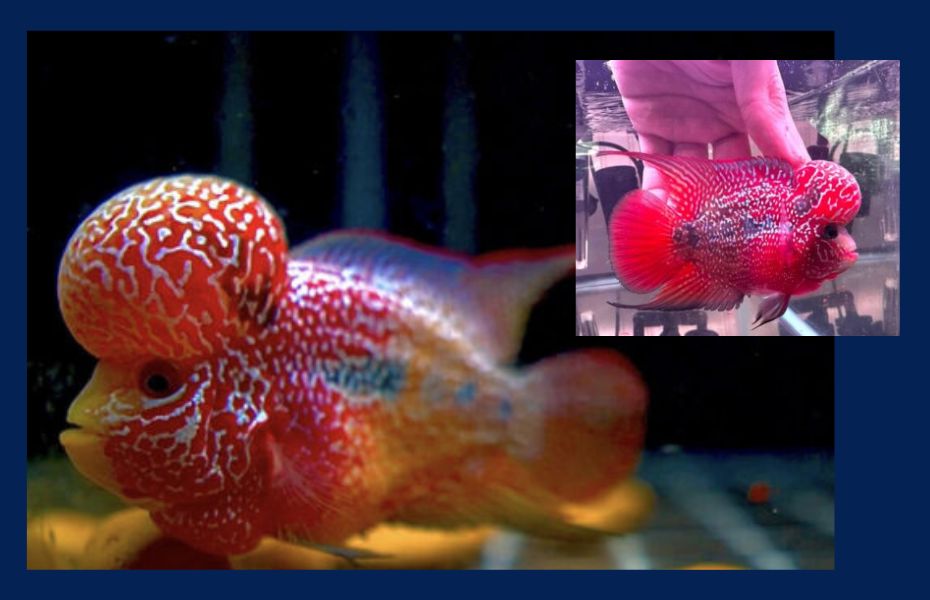
When it comes to King Kamfa Flowerhorns, there are certain traits that are considered to be indicative of a high-quality fish. These traits include:
- Vibrant coloration: A high-quality King Kamfa Flowerhorn will have vibrant, striking coloration, with bright reds, oranges, and yellows being particularly desirable.
- Good body shape: A high-quality King Kamfa should have a well-proportioned body with a large, round head and a pronounced nuchal hump.
- Clear eyes: Clear, bright eyes are a sign of a healthy fish and are an important trait to look for in a high-quality King Kamfa Flowerhorn.
- Fin shape: These flowerhorns should have well-formed fins that are symmetrical and free from any tears or frays.
- Active and healthy: A good Kamfa fish should be active and healthy, with a good appetite and no signs of disease or parasites.
- Wide and full KOK: The KOK (Kamfa Open Mouth) which is the main trait that King Kamfa Flowerhorns are known for, should be wide and full, with a strong and smooth curve.
- Good head shape: A high-quality King Kamfa Flowerhorn should have a good head shape, with a well-defined forehead, a well-defined crown and a distinct jaw line.
It’s important to keep in mind that these traits are not always present, and that each fish will have its own unique characteristics and qualities. Additionally, It is important to note that some of the traits can be enhanced through selective breeding, and that the fish quality can be improved over time.
Habitat
The King Kamfa Flowerhorn is not a naturally occurring species and is not found in the wild. It is only found in captivity and is considered a man-made species. Its creation is the result of selective breeding and crossbreeding of different cichlid species. The specific combination of parent species can vary, and different breeders may use different combinations to create their own unique strain of King Kamfa.
The flowerhorn is considered a hybrid species and is not recognized by the International Union for Conservation of Nature (IUCN) or other official organizations. It is not considered a wild species, and there is no conservation status for it.
Size and Lifespan
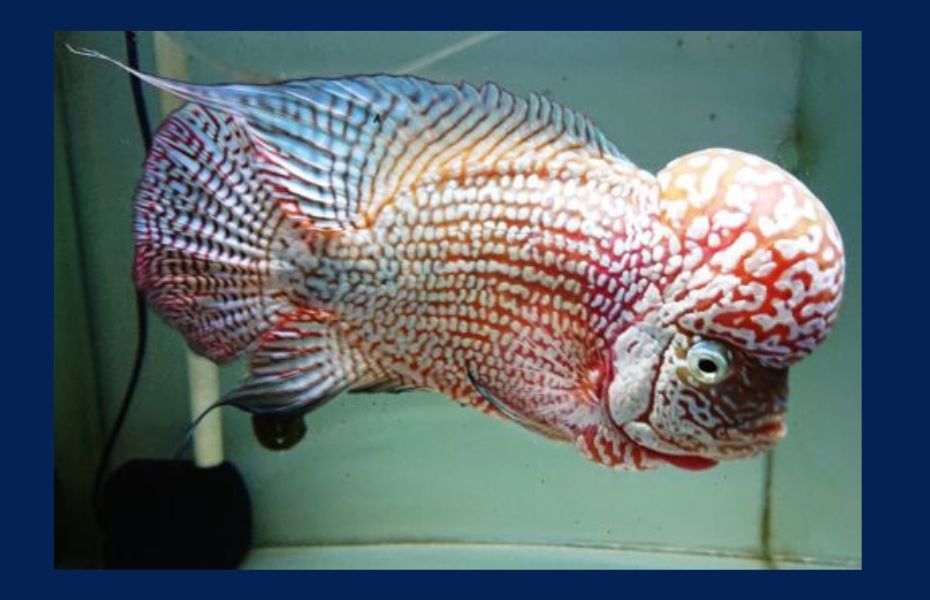
King Kamfa Flowerhorn is considered a large species of fish, and can grow up to 12 inches in length. However, the size of the fish can vary depending on the specific strain and the conditions in which it is kept. Proper nutrition and a healthy environment are important factors in determining the size and overall health of the fish.
These fish have a relatively long lifespan when compared to other cichlid species. They can live up to 8 years in captivity when kept in optimal conditions. However, their lifespan can vary depending on the specific strain, the care they receive, and the environment in which they are kept. Proper nutrition, a healthy environment, and good water quality are important factors in determining the lifespan of the fish.
It is important to note that these fish are relatively new species and not much research has been done on their lifespan. Some reports indicate that the fish can live for up to 10 years in captivity but that is not confirmed yet.
King Kamfa Flowerhorn Diet
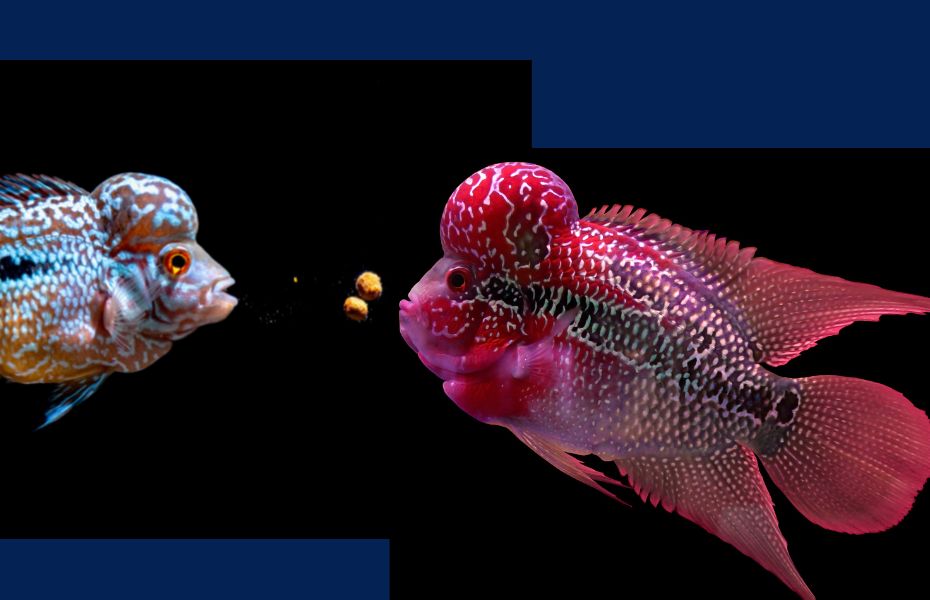
These fish are omnivorous and require a varied diet to maintain optimal health and growth. A diet that includes a mix of protein-rich foods such as blood worms, brine shrimp, and krill, along with a variety of vegetables such as spinach and zucchini, will provide the fish with the essential nutrients it needs to grow and thrive.
Protein-rich foods such as blood worms, brine shrimp, and krill are excellent sources of protein, essential amino acids, and other essential nutrients for King Kamfas. These foods can be fed live or frozen, and are available at most pet stores or online.
Vegetables such as spinach and zucchini are also an important part of the diet, as they provide the fish with essential vitamins and minerals. Vegetables can be fed fresh or frozen and should be blanched before feeding to make them more palatable for the fish.
Commercially available fish food products suitable for King Kamfa Flowerhorns include:
- Cichlid Pellets: These pellets are formulated specifically for cichlids and provide a balanced diet with a mix of protein, vitamins, and minerals.
- Cichlid Sticks: These sticks are also formulated specifically for cichlids and provide a balanced diet with a mix of protein, vitamins, and minerals. They are also a convenient option for feeding.
- Frozen Food: Frozen blood worms, brine shrimp, and krill are available in most pet stores and can be an excellent source of protein for these flowerhorns.
It is important to note that the Flowerhorns should be fed a varied diet to ensure they are getting all the nutrients they need. Feeding them the same food all the time can lead to nutrient deficiencies.
Ideal Water Conditions

King Kamfa Flowerhorn is a a freshwater fish and prefer water conditions that mimic their natural habitat. They prefer a water temperature of around 78-82°F, which can be easily maintained with an aquarium heater. The pH level of the water should be around 7.5-8.2, which is slightly alkaline. To maintain a stable pH level, it is important to use a pH test kit to monitor the pH level regularly and make adjustments as needed.
Best Thermometers for your King Kamfa Aquarium
Best Aquarium Water Test Kits for Your King Kamfa Aquarium
They also require high water quality, with a low level of nitrate and ammonia. Nitrate and ammonia levels can be monitored with test kits, and regular water changes are necessary to keep these levels low. A general rule of thumb is to do a water change of at least 25% of the water in the tank every 2 weeks.
A powerful filtration system is also an important aspect in maintaining ideal water conditions. A good filtration will help to remove impurities and keep the water clean and clear. A canister filter or a sump filter will provide enough filtration for a kamfa aquarium.
Best Filteration Systems for your King Kamfa Aquarium
It is important to note that King Kamfa Flowerhorn is sensitive to water quality, hence changes in water conditions can cause stress to the fish, which can lead to health problems. Therefore, it is important to monitor the water conditions regularly and make adjustments as needed.
In addition, it is also important to note that these flowerhorns are sensitive to chlorine and chloramines, which are often present in tap water. It is recommended to use a dechlorinator when doing water changes to remove these chemicals and make the water safe for the fish.
Another important aspect to consider when maintaining ideal water conditions is the water hardness. These fish prefer a water hardness of around 10-20 dGH (degrees of general hardness). This can be easily measured using a water hardness test kit and adjusted with the use of water conditioners or by using reverse osmosis water.
Overall, maintaining ideal water conditions for King Kamfa Flowerhorns is crucial for their health and well-being. A consistent water temperature, pH level, water quality, and water hardness will help to ensure a healthy and long-lasting fish. Regular monitoring and adjustments as needed, as well as using the appropriate equipment such as test kits, water conditioners, and filters will help to maintain ideal water conditions.
Tank Size
King Kamfa Flowerhorns are considered a large species of fish and require a large tank to accommodate their size and swimming needs. A minimum tank size of 55 gallons is recommended for an adult King Kamfa Flowerhorn. It is important to remember that bigger is always better when it comes to tank size, so a larger tank will provide more room for the fish to swim and explore, as well as more space for other equipment such as filters, heaters, and lighting.
Aquascaping
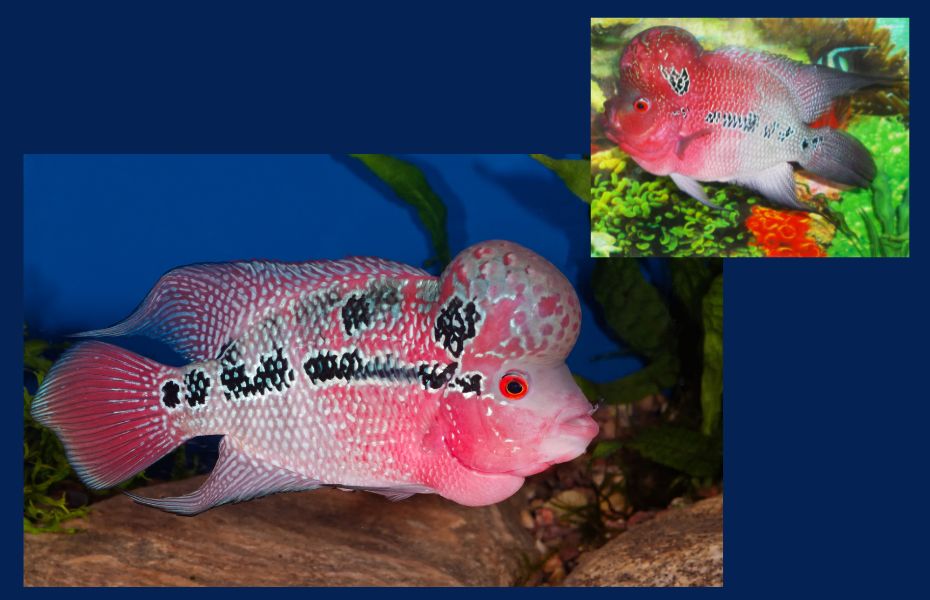
Aquascaping is the process of creating an aesthetically pleasing environment in the tank for the fish to live in. This can include adding plants, rocks, and other decorations to the tank. When aquascaping for King Kamfa, it is important to keep in mind their territorial nature and provide them with plenty of hiding spots and caves to retreat to. This can be achieved by adding rocks, caves, and other decorations to the tank. It is also important to provide the fish with plenty of open swimming space and to avoid overcrowding the tank with too many decorations.
Plants can also be added to the tank, but it is important to choose plants that can survive in the water conditions provided for the fish. Artificial plants can also be used as they do not require any maintenance and do not affect water quality.
Behavior and Temperament
King Kamfa Flowerhorn is known to be aggressive and territorial, especially during breeding. They are cichlid fish and as such, they have a strong territorial instinct. They will defend their territory from other fish and can become aggressive towards tankmates that they perceive as a threat. They are also known to be highly aggressive during breeding, and it is recommended to separate breeding pairs or keep them in a separate tank to avoid any potential fights.
It is important to remember that King Kamfa is not suitable for community tanks and should be kept with other fish that are also aggressive and can hold their own. Tankmates should be chosen carefully, and it is recommended to keep them with other large, aggressive cichlids or other fish species that can tolerate their aggressive behavior.
When choosing tankmates, it is important to consider their size and temperament. These are large fish under freshwater fish standard, and it is important to choose tankmates that are of similar size to avoid any potential bullying. They should also be kept with other fish that are not easily intimidated.
Provide plenty of hiding spots and caves for the fish to retreat to, as well as provide plenty of open swimming space to reduce competition for territory.
In addition, like other flowerhorns King Kamfa Flowerhorns also have unique personalities, some can be docile, but some can be aggressive. It is important to observe the fish behavior when choosing tankmates and also to monitor the tankmates and fish behavior. If the fish shows aggressive behavior, it is important to take action and separate them before any harm is done.
King Kamfa Flowerhorn Tankmates
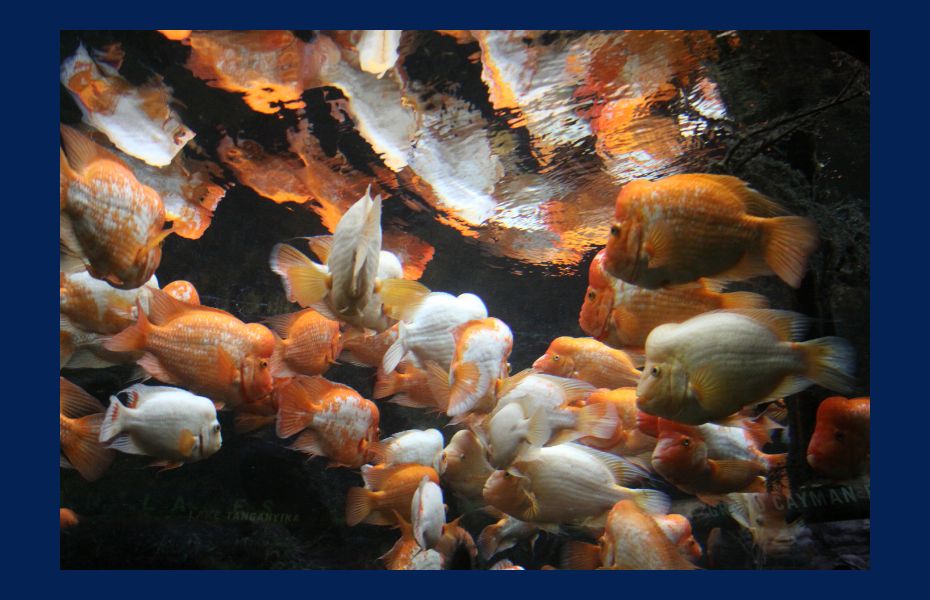
King Kamfa Flowerhorns can be kept with other fish, but it is important to choose tankmates that are also aggressive and can hold their own. Avoid keeping them with smaller fish or fish that are not able to defend themselves.
Some suitable tankmates include other large, aggressive cichlid species such as Texas cichlid, Oscar cichlid, Jack Dempsey cichlid, and Green terror cichlid. These species are known to be aggressive and can hold their own against the territorial behavior of King Kamfa Flowerhorns.
Other larger fish species, such as Arowana, Pacu, and Pangasius catfish can also make good tankmates. These fish are known to be aggressive and can tolerate the territorial behavior of King Kamfa Flowerhorns.
It is also possible to keep King Kamfa Flowerhorns with other large, aggressive fish species such as African cichlids and other larger fish species. However, it is important to research the specific species and their behavior before adding them to the tank.
It is also important to note that King Kamfa Flowerhorn is not suitable for community tanks and should be kept with other fish that are also aggressive and can hold their own. It is important to choose tankmates carefully and to monitor their behavior to ensure compatibility. It is also important to provide plenty of hiding spots and caves for the fish to retreat to, as well as providing plenty of open swimming space to reduce competition for territory.
Diseases and Prevention
King Kamfa Flowerhorns, like any other fish species, are susceptible to common fish diseases.
Treatment options for these diseases include use of antibiotics, parasites and fungus treatment, and also vitamin supplements. It is important to follow the manufacturer’s instructions and to monitor the fish’s response to the treatment.
Some of the diseases that King Kamfa is vulnerable to include:
Ich:
Also known as white spot disease,” Ich is caused by a parasite that attaches to the fish’s body and fins. It is characterized by white spots on the skin and fins and can be caused by poor water conditions.
Treatments
Treatment options for Ich include the use of copper-based medications or raising the temperature of the water to speed up the life cycle of the parasite, making it easier to eliminate.
Fin rot:
Fin rot is a bacterial infection that causes the fins to become frayed and discolored. It is often caused by poor water conditions or injuries to the fins.
Treatments
Treatment options for fin rot include the use of antibiotics such as erythromycin, tetracycline, or maracyn (erythromycin is the main ingredient). Add methalyn blue If the Kmafa has also developed a secondary fungal infection, antifungal treatment would be appropriate.
Swim bladder disorder:
This is a condition where the fish’s swim bladder is damaged, causing difficulty swimming or floating. It is often caused by poor diet or water conditions.
Treatments
Treatment includes changing the diet to one high in fiber and low in protein and also using Epsom salt in the water.
Start by not feeding the fish for a period of 2-3 days. After this, provide them with a diet that is based on vegetables. If the problem persists, try raising the temperature of the water in the tank to between 26-28 degrees Celsius. Additionally, add Epsom salt to the water at a ratio of 1/8 teaspoon per 19 liters of water.
Columnaris:
This is a bacterial infection that is characterized by open sores or ulcers on the fish’s body. It is often caused by poor water conditions or a weak immune system.
King Kamfa Flowerhorn Treatments
Treatment options for Flavobacterium columnare mainly include the use of antibiotics.
It is a Gram-negative bacteria, a combination of two antibiotics nitrofurazone and kanamycin can be used in a synergistic manner. Maracyn 2 can be also administrated.
Disease Prevention
Prevention measures include maintaining good water quality, conducting regular water changes, providing a balanced diet, and a healthy environment, quarantining new fish before adding them to the main tank, and also being aware of the common symptoms of disease in King Kamfa Flowerhorns and taking action if any are observed. Additionally, it’s important to keep an eye on the tank’s water parameters, such as pH, temperature and ammonia levels, as fluctuations or imbalances in these can make the fish more susceptible to diseases. Regularly cleaning and sanitizing the tank and equipment can also help to prevent the spread of diseases. It is also recommended to avoid overfeeding and to remove uneaten food promptly to prevent the build-up of harmful bacteria in the tank.
Breeding King Kamfa
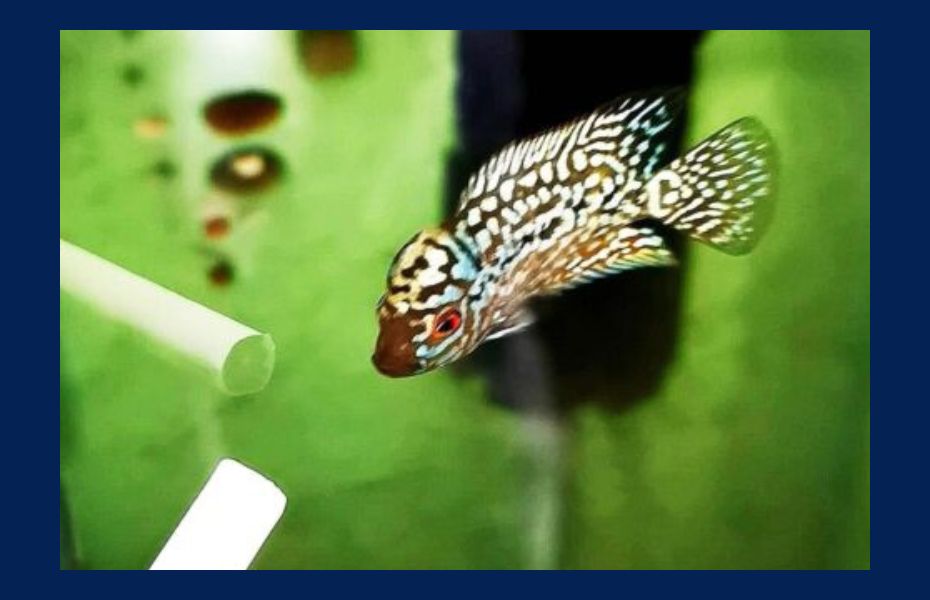
Breeding King Kamfa can be a rewarding experience for experienced aquarists. These fish are considered to be relatively easy to breed in captivity when provided with the proper conditions.
The first step in breeding is to select a suitable breeding pair. It is important to choose a pair that is healthy and of good quality, as this will increase the chances of successful breeding. The male and female should also be of similar size and age.
Once a suitable breeding pair has been chosen, it is important to provide them with a suitable breeding tank. A breeding tank should be at least 55 gallons in size and should be equipped with a heater, a filter, and a lighting system. It is also important to provide the breeding pair with plenty of hiding spots and caves, as this will help to reduce stress and increase the chances of successful breeding.
It is also important to provide the breeding pair with a balanced diet and to maintain good water quality. A diet that is high in protein and low in fat is recommended, as this will help to promote growth and health in the breeding pair.
When the breeding pair is ready to breed, the male will begin to court the female by displaying his fins and flaring his gills. The female will then lay her eggs on a flat surface, such as a rock or a leaf, and the male will fertilize them. The eggs will hatch in 3-5 days, depending on the water temperature.
Once the fry hatch, it is important to provide them with a suitable diet such as baby brine shrimp or micro worms. The fry will grow quickly and will need to be moved to a larger tank as they grow. It is also important to keep a close eye on the fry and to remove any that appear to be sick or weak, as this will help to prevent the spread of disease.
When breeding King Kamfa Flowerhorn, it is also important to be aware that the parents may become aggressive towards their offspring, so it’s important to provide them with a separate tank or to remove the fry from the breeding tank as soon as they are large enough to fend for themselves.
Care tips when breeding includes:
- Keep the breeding pair in optimal water conditions to increase the chances of successful breeding.
- Provide the breeding pair with a balanced diet to promote growth and health.
- Provide the breeding pair with plenty of hiding spots and caves.
- Remove the fry to a separate tank as soon as they are large enough to fend for themselves.
- Monitor the fry regularly and remove any that appear to be sick or weak.
- Keep a close eye on the parents and separate them if they become aggressive towards their offspring.
Special care tips for King Kamfa Flowerhorn
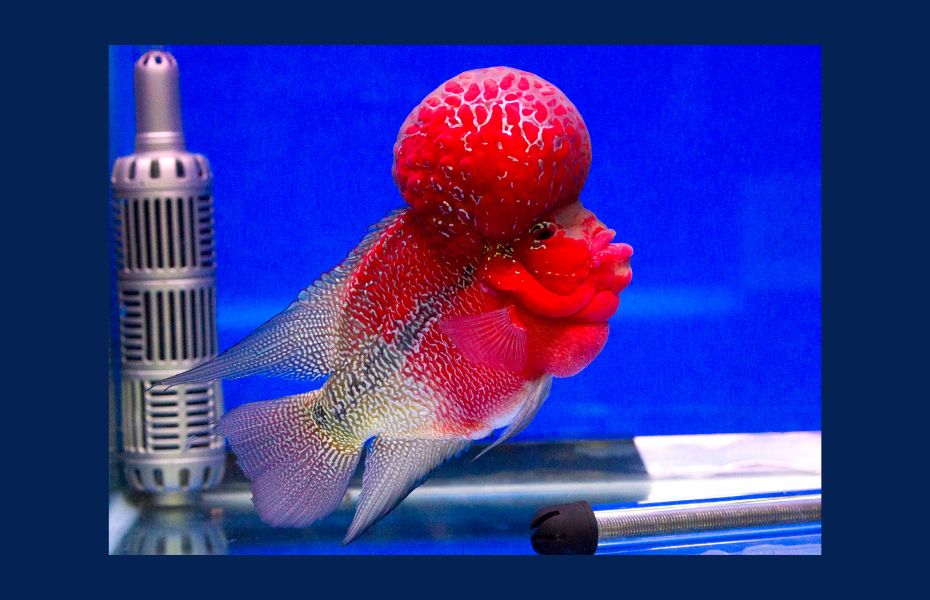
- Maintaining optimal water conditions: King Kamfa requires a water temperature of around 78-82°F with a pH of around 7.5-8.2. They also require high water quality with a low level of nitrate and ammonia. Regular water changes and a good filtration system are important to maintain ideal water conditions.
- Providing a balanced diet: These fish are omnivorous and require a varied diet. A diet that includes a mix of protein-rich foods such as blood worms, brine shrimp, and krill, along with a variety of vegetables such as spinach and zucchini, will provide the fish with the nutrients it needs to grow and thrive.
- Providing a suitable tank size: This fish can grow up to 12 inches in length, it is important to provide them with a tank that is at least 55 gallons in size, or larger if keeping multiple fish.
- Providing hiding spots and caves: King Kamfa Flowerhorns are territorial, providing plenty of hiding spots and caves for the fish to retreat to, as well as providing plenty of open swimming space to reduce competition for territory.
- Monitoring for signs of disease: King Kamfa Flowerhorns are susceptible to common fish diseases such as Ich, Fin rot, Swim bladder disorder, and Columnaris. It’s important to be aware of the common symptoms of these diseases and to take action if any are observed.
- Quarantine new fish before adding them to the main tank: It is important to quarantine new fish before adding them to the main tank to prevent the spread of disease.
- Monitoring the behavior of tankmates: King Kamfa Flowerhorns are known to be aggressive and territorial, it is important to monitor the behavior of tankmates and to separate them if necessary.
By following these special care tips, your King Kamfa Flowerhorns will be able to live a healthy and long life in your aquarium. It’s important to research and understand the specific needs of the species before getting one, and also to be prepared to provide the best possible care to ensure their well-being.
Conclusion
In conclusion, King Kamfa Flowerhorns are a unique and vibrant hybrid cichlid species that are popular among aquarium enthusiasts for their vibrant colors and unique body shape. They have a lifespan of around 8 years in captivity when kept in optimal conditions. Proper care and maintenance, including providing a balanced diet, optimal water conditions, a suitable tank size and hiding spots, monitoring for signs of disease and providing suitable tankmates are crucial for their well-being. Breeding King Kamfa can be a rewarding experience for experienced aquarists when provided with the proper conditions. By following these care guidelines, you can ensure that your King Kamfa Flowerhorns will thrive and bring beauty to your aquarium.
Join Our Reddit Discussion here